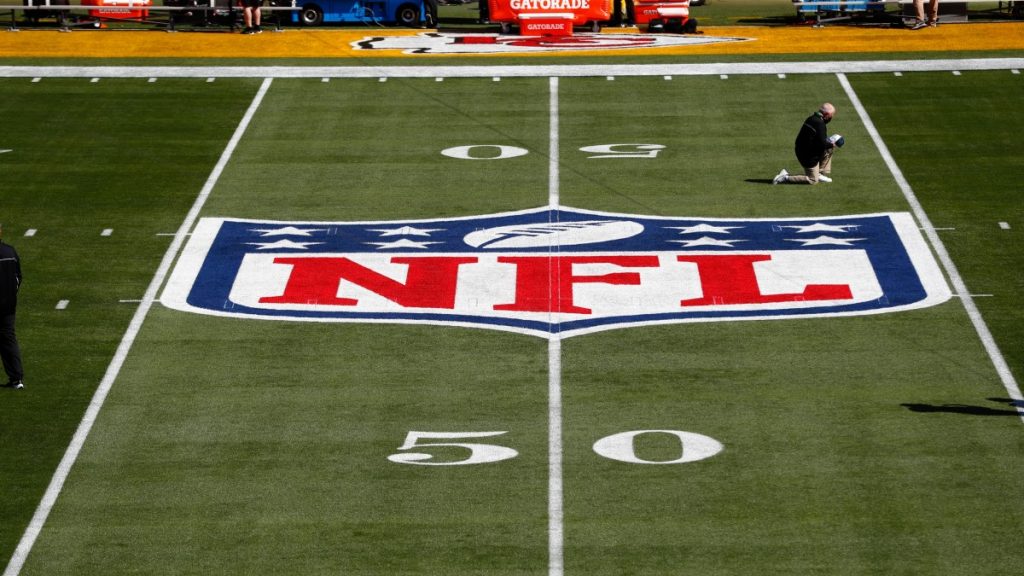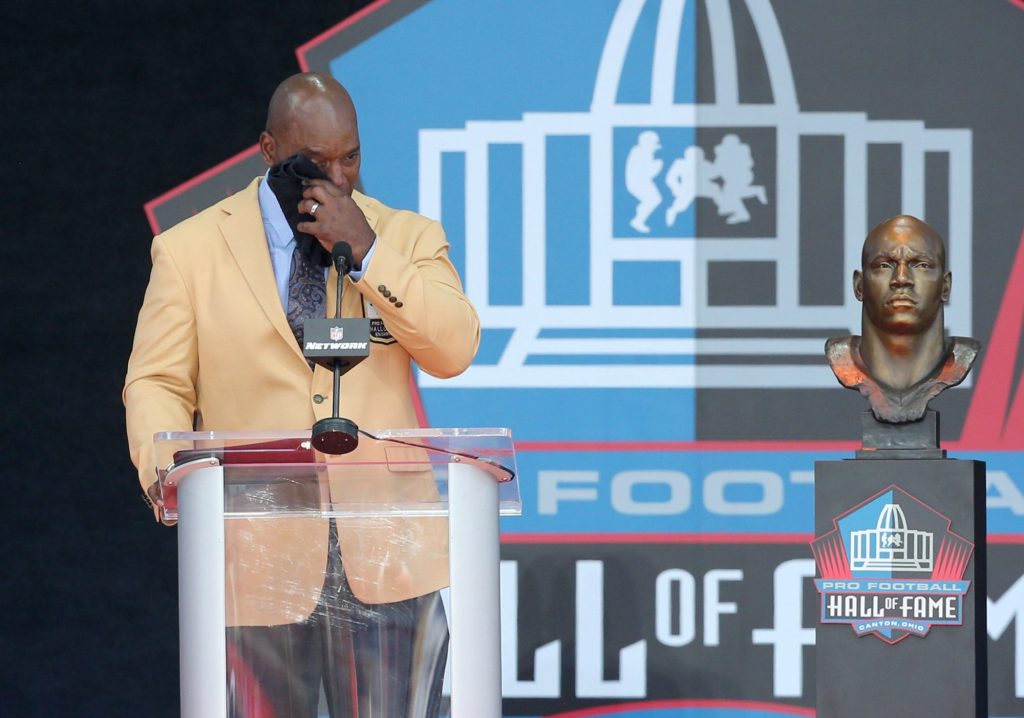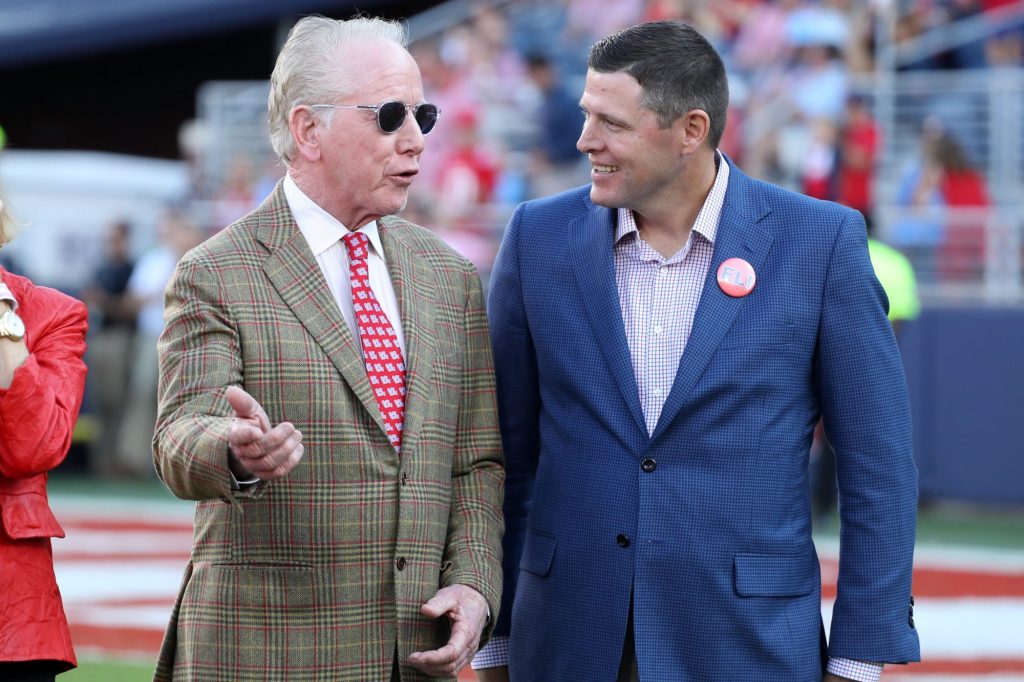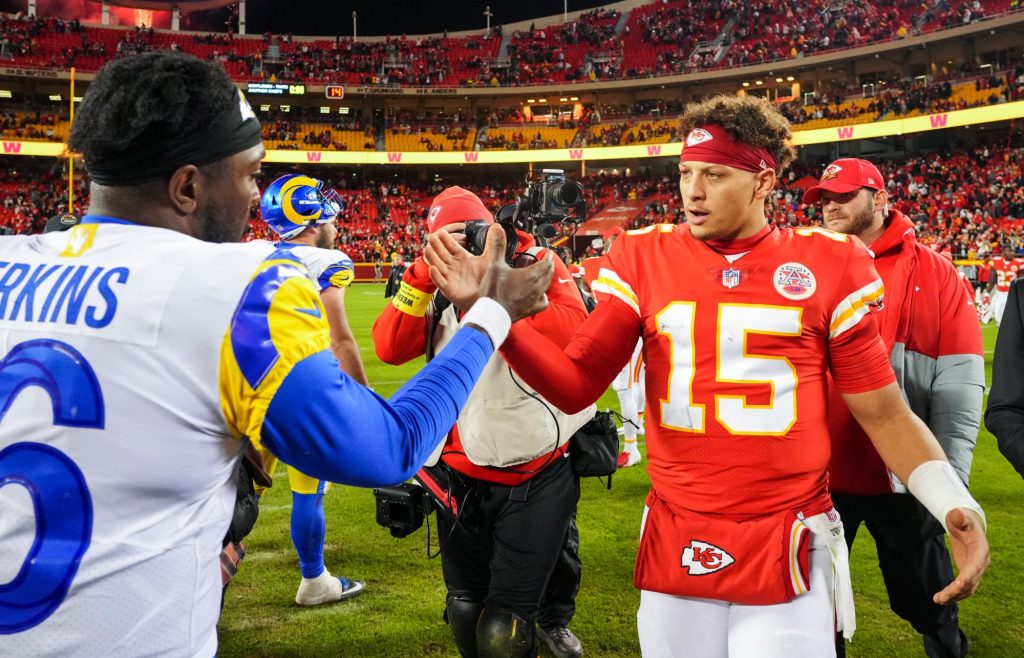There are few roster mechanisms as well known or as polarizing in the NFL as the franchise tag. Depending on who you ask, and when you ask them, the franchise tag is as likely to illicit a wide eyed smile as it is a dissatisfied frown.
NFL Franchise Tag explained
Using the NFL franchise tag is a decently common maneuver for teams, as an average of 8 teams have utilized it in each of the last 5 offseasons. There are also a couple different versions of the franchise tag that teams can choose to use.
What is the NFL Franchise Tag?
In its simplest form, the NFL franchise tag is essentially a one year placeholder contract for a player. The tag can only be applied to a player by their current team.
Additionally, teams can only use the franchise tag once each offseason. In the 2021 NFL offseason so far, ten players have received franchise tags from their incumbent teams. Some notable players who have received the franchise tag this year are Allen Robinson of the Chicago Bears, and Chris Godwin of the Tampa Bay Buccaneers, and Marcus Williams of the New Orleans Saints.
The franchise tag allows teams to essentially retain players who they think are important to their franchise for another season. It is a way to defer the decision of offering a player a long term contract. It is possible for players to be franchise tagged up to three years consecutively as a maximum, but this scenario usually does not unfold.
Which players can a Franchise Tag be used on?
Not every player on the team can be assigned the franchise tag by the front office. In order to be eligible for it, a player must be headed into unrestricted free agency.
As alluded to above, the franchise tag can be used as a stopgap measure to retain a player’s services for another season, as opposed to giving them a long term contract straightaway.
However, not every team uses the franchise tag every season, and some players are left to enter free agency. For example, the Detroit Lions had an interesting decision to make on wide receiver Kenny Golladay a few months ago. Golladay was going to be a restricted free agent, and the Lions could have signed him to a multi-year contract, or used the franchise tag. The Lions ultimately decided to do neither, and let Golladay test the free agent market. He would ultimately be signed by the New York Giants.
How much is the Franchise Tag worth?
The franchise tag is worth different amounts for different players in different seasons. It’s usually worth the average annual value salary of the top five high paid players at each position.
For example, applying the tag to a wide receiver this offseason would net a pass catcher $15.98 million for the 2021 season, because the top 5 highest compensated wide receivers make an average of that salary. However, it can also potentially be worth 120% of the player’s salary in the prior season, if that total is higher than the average annual value figure.
It’s important to point out that each position will have varying tag slots in a given year. Deciding to apply the franchise tag to a tight end, for example, would be much less costly than using it on a quarterback or a defensive end. As such, NFL front offices must also weigh the short term impact of using a tag to the following season’s salary cap budgeting.
What are the different types of Franchise Tag?
To make things more exciting, there are three main flavors of the franchise tag that NFL teams can use.
The most commonly used version is the exclusive rights franchise tag. Under this designation, players are locked into playing for the team that applied the tag to them. There is also a non exclusive tag, which opens up a couple of different possibilities for the player and the team. If the non exclusive version is used, then a player is free to talk to other teams in hopes of obtaining a new contract.
However, the player’s incumbent team has the final say, as they can match any offer another franchise wants to offer. If the team decides to let the player walk, they will receive two first round picks in exchange.
Teams also have the option of using the transition tag, which is kind of a combination of the exclusive and non exclusive label. Under the transition tag, players are instead compensated at the average annual value of the top 10 highest paid players at their position. Players are also able to speak with other teams to see if they can find a more amenable contract. However, if a player decides to take an offer elsewhere, the incumbent team will not receive draft pick compensation.
Want to learn more about the NFL? Check out our NFL Explained pieces here…








